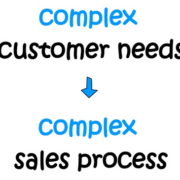The Closed Loop Marketing Architecture: A Data-Driven Approach to Success

Imagine a marketing and sales team working in perfect harmony, seamlessly passing qualified leads from one department to the next. This ideal scenario is made possible through the Closed Loop Marketing Architecture (CLMA), a data-driven approach that aligns teams, optimizes processes and drives revenue growth.
At the heart of the CLMA is a focus on metrics and reporting. By tracking key performance indicators (KPIs) across the entire marketing and sales funnel, you can gain valuable insights into the effectiveness of your campaigns, identify areas for improvement, and make data-driven decisions.
Top of the Funnel
- Website Traffic (Visitors): Monitor website traffic to gauge the reach of your content marketing efforts.
- Unique visitors
- Pageviews
- Bounce rate
- Time on site
- Lead Generation (MQIs): Track the number of leads generated through various channels, such as website forms, social media, and paid advertising.
- Number of leads generated
- Lead sources
- Conversion rates
- Content Engagement: Measure metrics like page views, time on site, and social shares to assess the effectiveness of your content.
- Social shares
- Dwell Time
- Comments
- Click-through rates
Middle of the Funnel
- MQLs (Marketing Qualified Leads): Track the number of leads that meet your criteria for being qualified to engage with sales.
- Number of MQLs generated
- MQL-to-SQL conversion rate
- Velocity: The speed of conversions in the marketing and sales funnel based on benchmarks.
- Days in stage by deal type
- Sales Handoffs: Monitor the timeliness and quality of lead handoffs from marketing to sales.
- Sales-Accepted Leads (SAL)
- Timeliness of handoffs
- Quality of information transferred
- Lead Nurturing Effectiveness: Measure the success of your lead nurturing campaigns in terms of engagement and conversion rates.
- Open rates
- Click-through rates
- Conversion rates
Bottom of the Funnel
- Conversion Rates: Track the percentage of leads that convert into customers.
- Website conversion rate
- Sales conversion rate
- Retention rate
- Value: Measure the average value of customer purchases.
- Average value of customer purchases
- Value of total pipeline
- Revenue generated by each customer over their lifetime.
- Customer Satisfaction: Track customer satisfaction metrics to gauge customer loyalty and retention.
- Net Promoter Score (NPS)
- Advocacy and unsolicited referrals
- Customer satisfaction surveys
By leveraging the power of metrics and data analytics, you can transform your marketing and sales efforts into a well-oiled machine. Analyzing the data helps you can identify trends, optimize campaigns, and make data-driven decisions to improve your marketing and sales performance.
Key Benefits of a Metrics-Driven CLMA
- Improved Efficiency: Streamline processes and eliminate bottlenecks by identifying areas for improvement.
- Enhanced Decision Making: Make informed decisions based on data-driven insights.
- Increased Accountability: Hold teams accountable for their performance and results.
- Optimized Resource Allocation: Allocate resources to the most effective marketing and sales activities.
- Improved Customer Experience: Deliver a more personalized and relevant customer experience by understanding their needs and preferences.
Additional Tips:
- Use a MAP/CRM system: A Marketing Automation and CRM system an help you track and manage leads, opportunities, and customer interactions.
- Set clear goals and objectives: Define what you want to achieve with your marketing and sales efforts.
- Regularly review and adjust your strategy: Continuously analyze your data and make necessary adjustments to your approach.
- Foster collaboration between marketing and sales: Ensure that both teams are working together towards common goals.
- Provide ongoing training and development: Keep your team up-to-date on the latest trends and best practices.
Follow these guidelines to more effectively implement a Closed Loop Marketing Architecture for your business.








Leave a Reply
Want to join the discussion?Feel free to contribute!